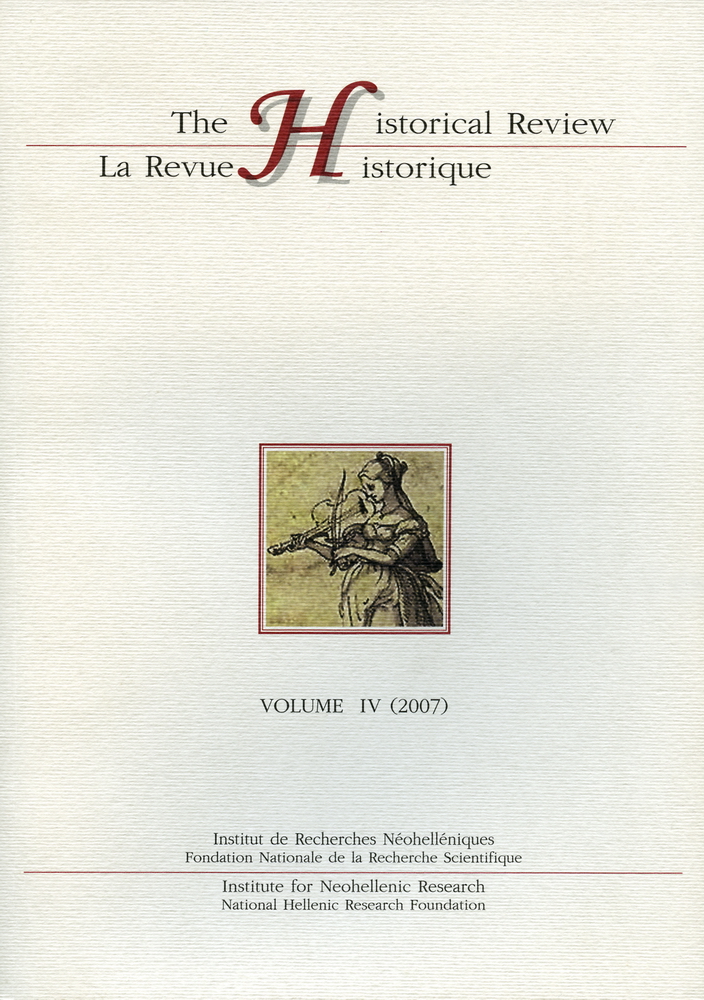Greek-Romanian Symbiotic Patterns in the Early Modern Period: History, Mentalities, Institutions - II
Abstract
This is the second part of a larger study seeking to contribute to a better understanding of the sustained process of religious, socio-political and cultural contact between Greek and Romanian ethnic groups in the early modern period. The two sections published here bring forward and discuss little-known and yet important evidence covering the first two post-Byzantine centuries and are intended to elaborate, supplement or contextualise the materials presented in the first part (which appeared in the previous volume of this journal). Not accidentally, this article ends with an unavoidable reference to the very text that ignited our exploration into the historical landscape of the pre-modern Balkans, a short but striking passage from Matthew of Myra's early seventeenth-century chronicle known as History of Wallachia. Indeed, Matthew's testimony stands out as one of the first conscious attempts to account for the uneasy, but also prolific, dynamic and multi-layered, relationship between the two peoples. It has been the aim of this paper to illustrate the basic patterns of that intricate, as much as intriguing, relationship as it was being shaped in the aftermath of the Byzantine Commonwealth's absorption into the challenging world of the Ottoman Turks.
Article Details
- How to Cite
-
Panou, N. (2008). Greek-Romanian Symbiotic Patterns in the Early Modern Period: History, Mentalities, Institutions - II. The Historical Review/La Revue Historique, 4, 59–104. https://doi.org/10.12681/hr.209
- Issue
- Vol. 4 (2007)
- Section
- Articles
The copyright for articles in this journal is retained by the author(s), with first publication rights granted to the journal. By virtue of their appearance in this open access journal, articles are free to use with proper attribution in educational and other non-commercial sectors. The Historical Review/La Revue Historique retains the right to publish papers that appear in the journal in collective volumes published by the Institute for Neohellenic Research/National Hellenic Research Foundation.
Sample acknowledgement: Reprinted with permission from the author. Original publication in the The Historical Review/La Revue Historique www.historicalreview.org
This work is licensed under a Creative Commons Attribution-NonCommercial-ShareAlike 4.0 Greece License. To view a copy of this license, visit http://creativecommons.org/licenses/by-nc-sa/4.0/ or send a letter to Creative Commons, 543 Howard Street, 5th Floor, San Francisco, California, 94105, USA




